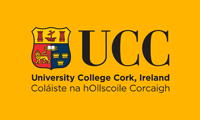News
Fibre – A One-Size-Fits All Approach Might Not Be The Best Solution
.png)
Fibre – A One-Size-Fits All Approach Might Not Be The Best Solution
APC researchers have three recent publications that investigate the links between fibre and brain function, obesity and microbiota composition.
The health benefits of dietary fibre as a nutrient have been known for more than 200 years and we are learning more and more about how fibre influences health and disease, particularly through the microbiome, the community of bacteria living in our guts. However, most people fail to reach the daily intake targets of fibre which range from 25-38g per day. But it’s not just the quantity of fibre that is important, as is discussed in a review recently published by researchers, led by Prof Catherine Stanton. Poor intake of dietary fibre is associated with a less diverse, imbalanced gut microbiome where non-beneficial bacteria are found in greater numbers at the expense of beneficial ones which are found in lesser abundance.
APC Microbiome Ireland has played a key role in demonstrating the importance of the gut microbiota in influencing brain function. Although specific bacterial strains have been shown to modulate brain and behaviour, less is known about the potential of prebiotics (dietary agents that support the development of beneficial bacteria) to influence brain function and cognition, and most evidence available stems from animal studies.
A recent study from Prof John Cryan & Prof Ted Dinan’s group that has been published online in Psychopharmacology found that a specific prebiotic fibre (polydextrose) could have potential benefits on cognitive performance. In this 4-week intervention study, led by Dr Kirsten Berding Harold and Dr Caitriona Long-Smith, healthy adult females taking polydextrose daily showed modest improvements in measures of sustained attention and cognitive flexibility. Interestingly, the polydextrose had limited impact on many of the biological markers studied. Nevertheless, the data generated from this study is the first human study investigating the impact of this fibre on brain health. Therefore, while this was a relatively small-scale study, the results provide preliminary evidence for future studies focusing on the development of functional foods with cognitive-enhancing effects.
Consumption of dietary fibre has also been associated with reduced risks of pathologies associated with obesity. This is thought to be mediated by the gut microbiome. Dietary fibres aren’t digested with the rest of our food and so reach the colon intact where they are then fermented by the bacteria living there. The fermentation produces short-chain fatty acids e.g. propionate and butyrate, which are known to help prevent obesity and reduce the risk of developing cardiovascular disease, type 2 diabetes, and gastrointestinal cancers.
However, human trials using fibre as a dietary intervention for weight loss have given very inconsistent results. This is likely to be because there is considerable variation between the communities of gut bacteria found in different people. Because the fermentation of fibre is quite complex and involves many different bacteria, this causes people to respond to fibre differently.
A very nice example of this variation has been demonstrated recently in research at the University of Alberta, led by Prof Jens Walter, who has recently joined APC Microbiome Ireland in Cork.
The researchers looked at the consumption of a high dose (25 gram for females, 35 gram for males) of arabinoxylan, a long-chain fermentable fibre found in corn bran, by individuals who are overweight and obese, over 6 weeks in a randomised control trial.
They found that consuming corn fibre led to changes to the wider community of bacterial species of all the participants’ individual gut microbiomes. This “global shift” is something that is rarely detected.
Some, but not all, people were found to have increased levels of propionate in their faeces. This is both interesting and quite novel. The increase in propionate depended both on the pre-existing community of microbes in a person as well as how much their microbiome had changed during the study. This makes sense as if people are missing important “keystone” species in the first place, they may not be able to either begin or complete the fermentation.
“Propionate is considered an important metabolite, but we detected responders and non-responders. We also showed that the gut microbiome composition can be used to predict such responses”, said Prof Jens Walter. “These findings suggest that a one-size-fits all approach might not be the best solution for fibre. We will need to do larger studies to determine the exact factors that predict microbiota responses to dietary fibre, and if such information can be used to personalize fibre recommendations.”
For now, the best dietary advice for supporting one’s microbiota is to diversify the dietary sources of fibre, ideally consuming more fruit, vegetables, whole grains, and nuts. This diet will provide the nutritional support to optimize metabolism of the gut microbiota.
Review
Benefits of dietary fibre with a focus on gut microbiota F.Koc et al. 2020 Nutrition Bulletin https://onlinelibrary.wiley.com/doi/full/10.1111/nbu.12448
Original Articles
Gut microbiota modulation with long-chain corn bran arabinoxylan in adults with overweight and obesity is linked to an individualised temporal increase in fecal propionate Nguyen et al 2020 Microbiome 8:118 https://doi.org/10.1186/s40168-020-00887-w https://microbiomejournal.biomedcentral.com/articles/10.1186/s40168-020-00887-w
A specific dietary fibre supplementation improves cognitive performance-an exploratory randomised, placebo-controlled, crossover study” (accepted to Psychopharmacology Sep 2020; available online ahead of print) https://link.springer.com/article/10.1007/s00213-020-05665-y


